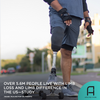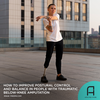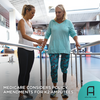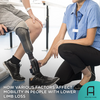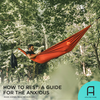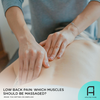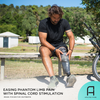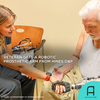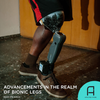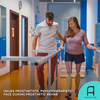6 Stretches that Improve Residual Limb Function
Stretching—you can take it or leave it. But can you really?
If you’re someone who exercises regularly and stays active, you may not notice anything for a while. Your diet's okay, you stay lean, and you look just as great as you feel. You may ask yourself: Why do I need to stretch?
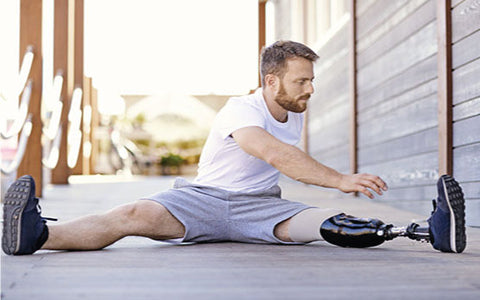
It's a common mistake to think that stretching is exclusive to yogis and runners—that is until you wake up one morning with a flinching pain in your lower back. Your instincts kick in and you stretch for a bit, feeling temporary relief. You go on about your day as usual, and you forget about the pain you felt that morning. You head back to the gym like the beast that you are.
It becomes a cycle. There will be days when you feel like you need a stretch. The pain persists but you don’t think it's a big deal. You forget about it again, but the villainous pain on your lower back doesn’t give you a respite anymore. This is when you figure out that something's wrong.
So, what happened?
Your prosthesis becomes your main suspect for this injury, however, it can be isolated from wearing a prosthetic in the first place. This is a type of pain that could have been avoided.
Because you haven't been regularly stretching, your hip flexors tighten. If you're an above-knee amputee, the tighter your hip flexors are, the more work and strain is required from your lower back. As your hamstrings get tighter, your pelvis gets pulled down with them, which then changes your spine's curvature.
As it gets worse from sitting all day, your hamstring retracts, the lumbar curve vanishes, and your posture gets bad. Say hello to vertebral herniation (a.k.a. slip disc).
Now you know what the problem is, what should you do?
It's time to get moving and get your muscles working. This can be the push you need to finally sign up for a beginner’s yoga class. Or you can also stretch at home with these 8 moves:

(photo courtesy of Amputee Coalition)
Knee Flexor or Hamstring Stretch
- Sit on the edge of a hard furniture, like a sofa.
- Point the leg you'll be stretching in front of you.
- Hang your opposite leg to the side.
- Gradually lean forward until you feel some resistance in the back of your extended leg.
- Remember not to bounce!
------------------
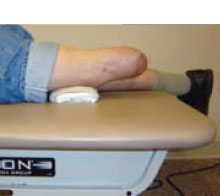
(photo courtesy of Amputee Coalition)
Prone Position (Face Down)
- Lie on your stomach.
- If you're a below-knee amputee, place a towel under your leg above your knee, or close to the end of your residual limb if you're an AK amputee.
- Keep enough leverage on the front of your hip and thigh.
------------------

(photo courtesy of Amputee Coalition)
Supine Position (Face Up)
- Sit on the edge of a bed or mat.
- Lie back while you grab the opposite leg from the one you'd stretch.
- The stretched residual limb should be hanging in the air.
- Apply the pressure downward to your residual limb with an ankle weight or ask another person for support.
------------------
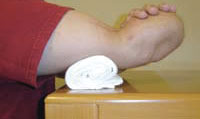
(photo courtesy of Amputee Coalition)
Flexor Stretch
- On a table or hard surface, place your residual limb horizontally with a rolled towel under your arm just above your elbow.
- Apply downward pressure to the end of your residual limb until you feel a stretch.
---------------------------
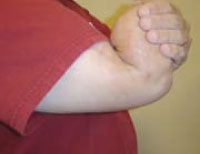
(photo courtesy of Amputee Coalition)
Extensor Stretch
- Bend your residual limb at the elbow as far back as you can.
- Apply some pressure to the back of your forearm until you feel a stretch.
Shoulder Stretch
If you have an upper limb that's amputated, you may have noticed that you have limited shoulder motion due to decreased activity. To remedy this, make sure to include some shoulder stretches daily to keep your shoulder working.





























